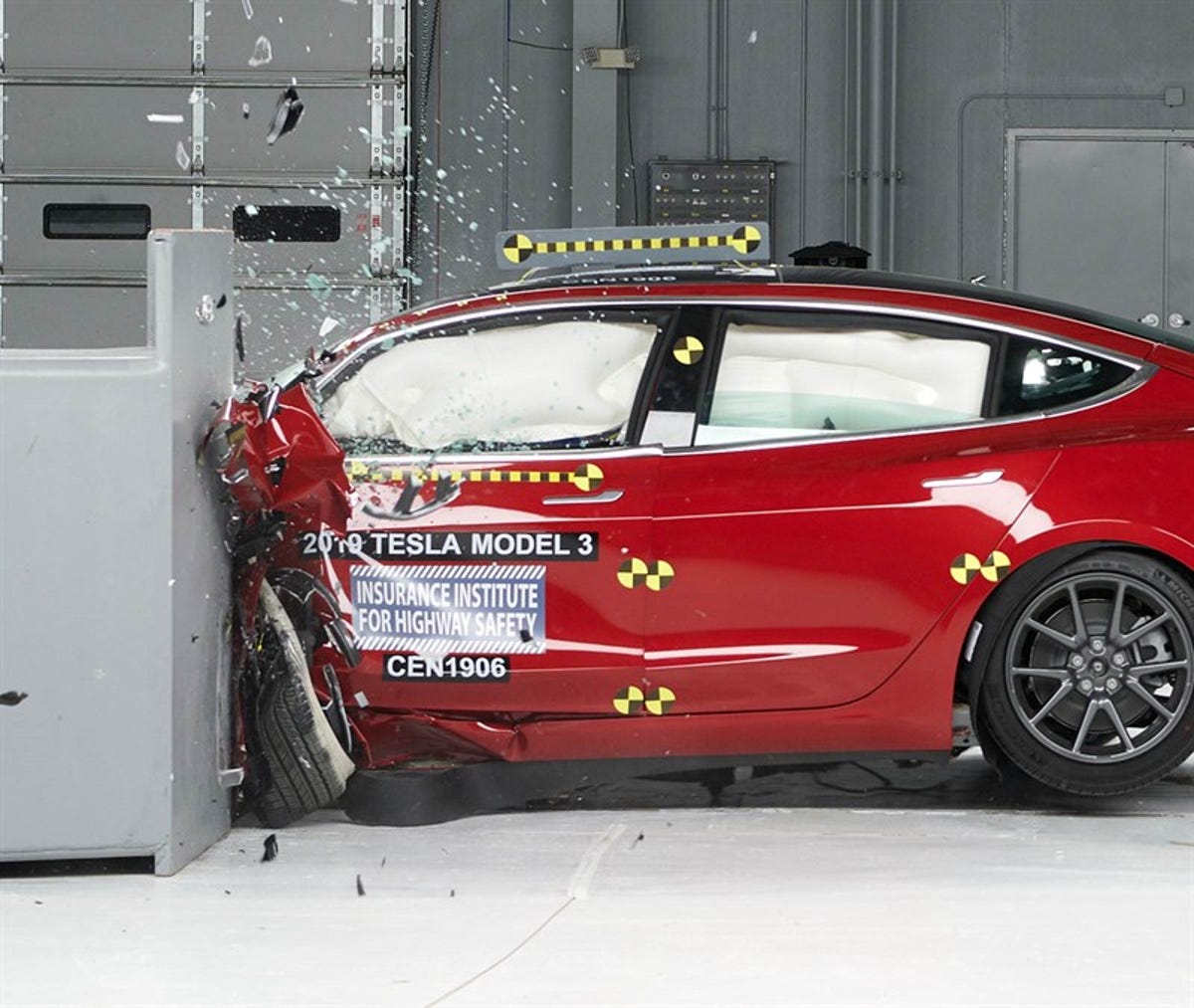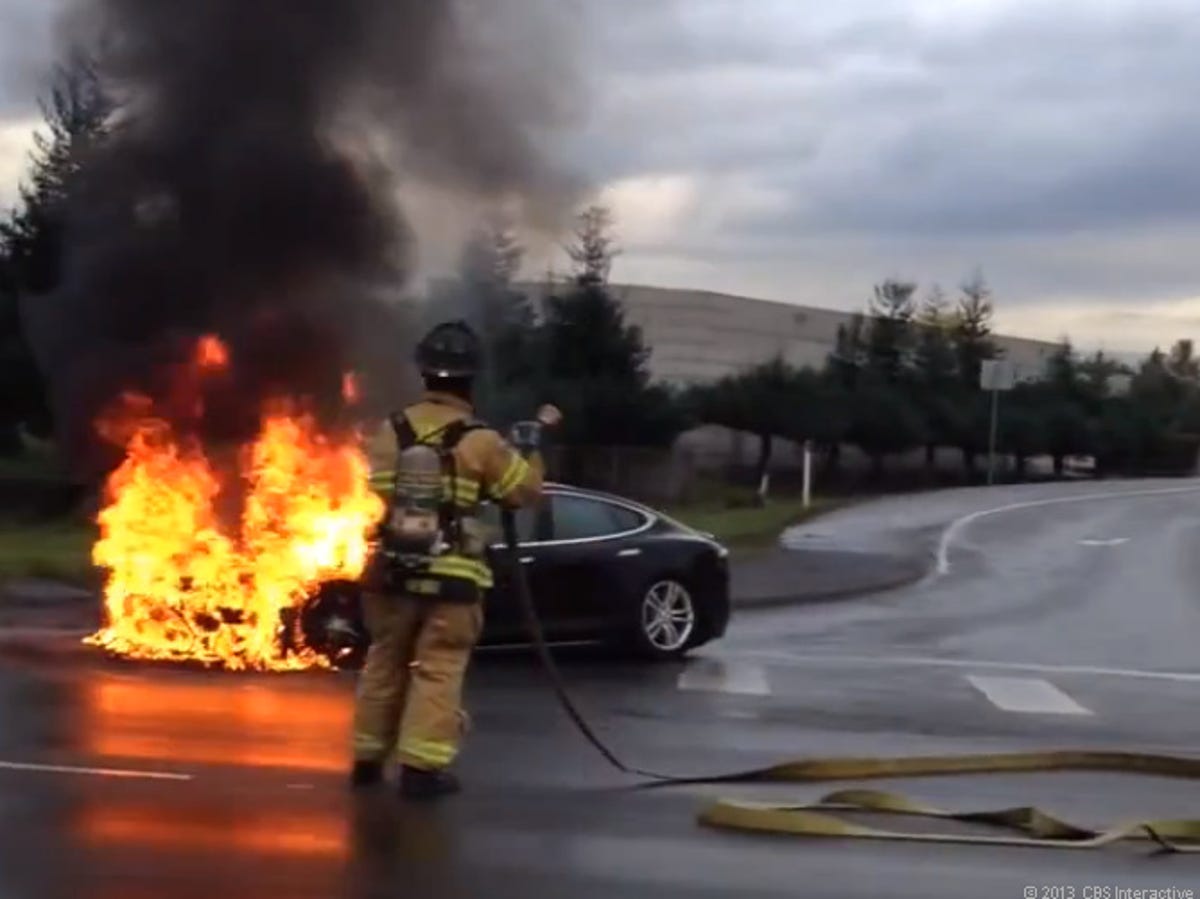EV Crash Testing Takes Collisions to a New Level
This story is part of Plugged In, CNET’s hub for all things EV and the future of electrified mobility. From vehicle reviews to helpful hints and the latest industry news, we’ve got you covered.
Electric cars are different in many ways and one of them is the way they crash. But are they better or worse than a conventional car?

A Tesla Model 3 during IIHS crash testing. It earned a Top Safety Pick + rating, though IIHS noted that the bottom of its A pillar deformed a concerning 8 inches rearward.
IIHS
The Insurance Institute for Highway Safety, the best-known evaluator of vehicle safety, recently tuned up the building where it crashes cars to make sure it can handle heavier ones up to 9,500 pounds. That’s far above the average new car weight of 4,100 pounds but just barely enough to test an electric Hummer pickup at 9,100 pounds and the presumably heavier electric Hummer SUV that arrives in the spring of 2023. Even the comparatively svelte Volvo EX90 weighs 6,200 pounds, the Mercedes EQS 6,000 pounds and a Tesla Model S sedan can hit 4,800 pounds.

The massive “skateboard” of the Hummer EV pickup helps it weigh 9,063 pounds, 2.2 times as much as the average new car.
GMC
All that lard is a good thing if it’s surrounding you in a crash: Heavier cars tend to push lighter cars around, transferring less energy to the heavier car’s occupants. And EVs carry their extra bulk down low, giving them a low center of gravity that resists rollovers.
The top-selling electric cars enjoy an enviable early track record in the IIHS safety ratings: The Tesla Model 3 and the Model Y both earn a Top Safety Pick + as do the Hyundai Ioniq5 and Kia EV6. The Ford Mustang Mach-E falls just short with a standard Top Safety Pick partly due to its mediocre standard headlights.
The IIHS subjects electric cars to the same crash tests as conventional cars: Full frontal collision, various overlap collisions, roof integrity tests, all evaluated according to how well a car protects the occupants in each scenario. As with all cars it tests, the maximum collision speed for an EV is 40 MPH; If crash test carnage looks like something you wouldn’t want to be part of, imagine it 33% faster with impact forces that increase as the square of that speed increase.

At 4,025 pounds a 1990 Lincoln Town Car used to be a true heavyweight but with today’s trend toward trucks, SUVs and electric vehicles, the Lincoln’s weight is on the light side of average.
IIHS
IIHS says injury claims related to drivers and passengers in EVs are over 40% lower than what was seen from conventional car occupants from 2011 to 2019, a trend similar to that of HLDI data about hybrid vehicles. Aside from greater weight, electric cars are generally more modern and high-tech, making it more likely they’ll have the latest crash avoidance and survival technologies.
EVs have a charge during their IIHS test yet the organization says it’s never had an EV catch fire or have a thermal runaway as a consequence of being crash tested. Its study of vehicle fires in fatal car accidents from 2009 to 2014 found a similar rate between conventional and electric vehicles. That said, IIHS segregates freshly crashed EVs; There are many stories of EVs catching fire well after a collision, but it’s probably overblown since we hardly notice the over 170,000 combustion car fires each year.

If this was a gas-engined car, nobody would care.
Screenshot by Wayne Cunningham/CNET
Bottom line: You probably want to be in an EV during a collision to benefit from its greater weight, lower center of gravity, newer safety tech and risk of fire that isn’t notably greater than cars that carry a large tank of flammable liquid.
For all the latest world News Click Here

